Sergey Rachmaninoff: The 100 most inspiring musicians of all time
Composer Sergey Vasilyevich Rachmaninoff was the last great figure of the tradition of Russian Romanticism and a leading piano virtuoso of his time. (b. March 20 [April 1, New Style], 1873, Oneg, near Semyonovo, Russia—d. March 28, 1943, Beverly Hills, Calif., U.S.).
He is especially known for his piano concerti and the piece for piano and orchestra entitled Rhapsody on a Theme of Paganini (1954).
Please, subscribe to our Library.
If you are already a subscriber, please, check our NEW SCORES’ page every month for new sheet music. THANK YOU!
Early Life
Rachmaninoff was born on an estate belonging to his grandparents, situated near Lake Ilmen in the Novgorod district. His father was a retired army officer and his mother the daughter of a general. The boy was destined to become an army officer until his father lost the entire
family fortune through risky financial ventures and then deserted the family. Young Sergey’s cousin Aleksandr Siloti, a well-known concert pianist and conductor, sensed the boy’s abilities and suggested sending him to the noted teacher and pianist Nikolay Zverev in Moscow for his piano studies.
It is to Zverev’s strict disciplinarian treatment of the boy that musical history owes one of the great piano virtuosos of the 20th century. For his general education and theoretical subjects in music, Sergey became
a pupil at the Moscow Conservatory.
At age 19 he graduated from the Conservatory, winning a gold medal for his one-act opera Aleko (after Aleksandr Pushkin’s poem Tsygany [“The Gypsies”]). His fame and popularity, both as composer and concert pianist, were launched by two compositions: the Prelude in C-sharp Minor, played for the first time in public on Sept. 26, 1892, and his Piano Concerto No. 2 in C Minor, which had its first performance in Moscow on Oct. 27, 1901. The former piece, although it first brought Rachmaninoff to public attention, was to haunt him throughout his life—the prelude was constantly requested by his concert audiences.
The concerto, his first major success, revived his hopes after a trying period of inactivity.
In his youth, Rachmaninoff was subject to emotional crises over the success or failure of his works as well as his personal relationships. Self-doubt and uncertainty carried him into deep depressions, one of the most severe of which followed the failure, on its first performance in March 1897, of his Symphony No. 1 in D Minor.
The symphony was poorly performed, and the critics condemned it. During this period, while brooding over an unhappy love affair, he was taken to a psychiatrist, Nikolay Dahl, who is often credited with having restored the young composer’s selfconfidence, thus enabling him to write the Piano Concerto No. 2 (which is dedicated to Dahl).
Major Creative Activity
At the time of the Russian Revolution of 1905, Rachmaninoff was a conductor at the Bolshoi Theatre. Although more of an observer than a person politically involved in the revolution, he went with his family, in
November 1906, to live in Dresden. There he wrote three of his major scores: the Symphony No. 2 in E Minor (1907), the symphonic poem The Isle of the Dead (1909),and the Piano Concerto No. 3 in D Minor (1909).
The last was composed especially for his first concert tour of the United States, highlighting his much-acclaimed pianistic debut on Nov. 28, 1909, with the New York Symphony under Walter Damrosch. Piano Concerto No. 3 requires great virtuosity from the pianist; its last movement is a
bravura section as dazzling as any ever composed.
In Philadelphia and Chicago he appeared with equal success in the role of conductor, interpreting his own symphonic compositions. Of these, the Symphony No. 2 is the most significant: it is a work of deep emotion and haunting thematic material. While touring, he was invited to become permanent conductor of the Boston Symphony, but he declined the offer and returned to Russia in February 1910.
The one notable composition of Rachmaninoff ’s second period of residence in Moscow was his choral symphony The Bells (1913), based on Konstantin Balmont’s Russian translation of the poem by Edgar Allan Poe. This work displays considerable ingenuity in the coupling of choral and orchestral resources to produce striking imitative and textural effects.
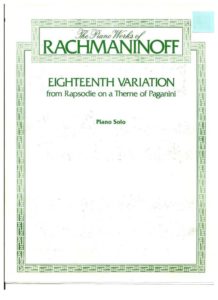
Later Years
After the Russian Revolution of 1917, Rachmaninoff went into his second self-imposed exile, dividing his time between residences in Switzerland and the United States. Although for the next 25 years he spent most of his time
in an English-speaking country, he never mastered its language or thoroughly acclimatized himself. With his family and a small circle of friends, he lived a rather isolated life.
He missed Russia and the Russian people—the sounding board for his music, as he said. And this alienation had a devastating effect on his formerly prolific creative ability. He produced little of real originality, but rewrote some of his earlier work. Indeed, he devoted himself almost entirely to concertizing in the United States and Europe, a field in which he had few peers.
His only substantial works from this period are the Symphony No. 3 in A Minor (1936), another expression of sombre, Slavic melancholy, and the Rhapsody on a Theme of Paganini for piano and orchestra, a set of variations on a violin caprice by Niccolò Paganini. Rachmaninoff’s last major work, the Symphonic Dances for orchestra, was composed in 1940, about two years before his death.
Sheet Music Download.
Best of Rachmaninoff
Rachmaninoff is widely considered one of the finest pianists of his day and, as a composer, one of the last great representatives of Romanticism in Russian classical music. Early influences of Tchaikovsky, Rimsky-Korsakov, and other Russian composers gave way to a personal style notable for its song-like melodicism, expressiveness and his use of rich orchestral colors.The piano is featured prominently in Rachmaninoff’s compositional output, and through his own skills as a performer he explored the expressive possibilities of the instrument.
Track List:
(0:00) Piano Concerto No.2 in Cm Op.18 – I. Moderato (9:19) Piano Concerto No.2 in Cm Op.18 – II. Adagio sostenuto (19:50) Piano Concerto No.3 in Dm Op.30 – I. Allegro (34:46) Piano Concerto No.4 in Gm Op.40 – III. Allegro vivace (43:26) Rhapsody on a Theme of Paganini Op.43 (1:04:04) Symphony No.1 in Dm Op.13 – I. Grave – Allegro ma non troppo (1:17:52) Symphony No.2 in Em Op.27 – III. Adagio (1:33:00) Symphonic Dances Op.45 – I. Non allegro
(1:44:59) Prelude Op.23 No.02 in Bbm – Maestoso (1:48:41) Prelude Op.23 No.10 in Gbm – Largo (1:52:49) Morceaux de Salon Op.10 – No.5 in G – Humoresque (1:59:57) Etudes-tableaux Op.39 – Allegro moderato – Tempo di marcia in D No.9 (2:03:37) Cello Sonata in Gm Op.19 – III. Andante (2:09:19) The Bells Op.35 – III. Presto (2:18:10) Vespers Op.37 – Bless the Lord, O my soul (2:23:03) Francesca da Rimini Op.25 – I. Prologue
Performers:
Piano Concertos No. 2, No. 3, No. 4 and Rhapsody on a Theme of Paganini (Earl Wild (pianist) Royal Philharmonic Orchestra, Jascha Horenstein (conductor) Symphony No.1 in Dm Op.13 – I. Grave – Allegro ma non troppo (USSR Ministry of Culture Symphony Orchestra and Gennady Rozhdestvensky (conductor)
Symphony No.2 in Em Op.27 – III. Adagio (London Symphony Orchestra and Gennady Rozhdestvensky (conductor) Symphonic Dances Op.45 – I. Non allegro (Russian State Symphony Orchestra and Valery Polyansky (conductor) Prelude Op.23 No. 2 and No. 10 (Santiago Rodriguez (piano) Morceaux de Salon Op.10 – No.5 in G – Humoresque (Alexander Ghindin (piano) Etudes-tableaux Op.39 – Allegro moderato – Tempo di marcia in D No.9 (Nikolai Lugansky (piano)
Cello Sonata in Gm Op.19 – III. Andante (Yakov Flier (piano) Daniil Shafran (cello) The Bells Op.35 – III. Presto (Olga Lutsiv-Ternovskaya (soprano) Leonid Bomstein (tenor) Vyacheslav Pochapsky (bass) State Symphony Capella of Russia and Valery Polyansky (conductor)
Vespers Op.37 – Bless the Lord, O my soul (Olga Borusene (soprano) Yuri Korinnyk (tenor) Mykhaylo Tyshchenko (tenor) The National Academic Choir of Ukraine “Dumka” and Valery Polyansky (conductor) Francesca da Rimini Op.25 – I. Prologue (Bolshoi Orchestra and Andrei Chistyakov (conductor)
Browse in the Library:
| Artist or Composer / Score name | Cover | List of Contents |
|---|---|---|
| A dozen A Day Book 1 Technical exercises for the piano |
 |
A dozen A Day Book 1 Technical exercises for the piano |
| A dozen A Day Book 2 Technical exercises for the piano |
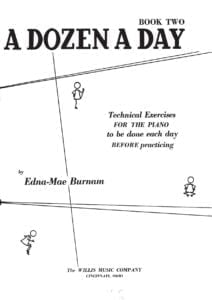 |
|
| A dozen A Day Book 3 Technical exercises for the piano |
 |
|
| A dozen A Day Book 4 Technical exercises for the piano |
 |
|
| A dozen A Day Mini Book Technical exercises for the piano |
 |
|
| A dozen Day Preparatory Book Technical exercises for the piano |
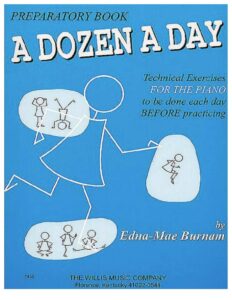 |
|
| A Farewell To Arms Love Theme From A Farewell To Arms film by Mario Nascimbene Francis Webster 1957 |
 |
|
| A Felicidade (Antonio Carlos Jobim) | ||
| A Festival Gathering Of Carols (Musescore File).mscz | ||
| A Fine Frenzy – Almost Lover |
 |
|
| A Fistful of Dollars (Ennio Morricone) | ||
| A Generative Theory Of Tonal Music by Fred Lerdahl and Ray Jackendoff (Book) |
 |
|
| A Guide To Guitar Chords by Curt Sheller |
 |
A Guide To Guitar Chords by Curt Sheller |
| A Guide To Musical Analysis by Nicholas Cook (Book) |
 |
|
| A Handbook Of Piano Playing (By Eric Hope) (1962) |
 |
|
| A Heart Full Of Love (Musescore File).mscz | ||
| A love suicide (Yutaka Minobe) | ||
| A Love Supreme (by Ashley Kahn) The story of john Coltrane’s signature album (Book) |
 |
|
| A Media Luz (Edgardo Donato) | ||
| A Modern Approach To Jazz Rock And Fusion For Guitar with Tablature |
 |
A Modern Approach To Jazz Rock And Fusion For Guitar |
| A Modern Method For Guitar (Berklee) 1 by William Leavitt |
 |
A Modern Method Berklee 1 |
| A Modern Method For Guitar (Berklee) 2 by William Leavitt |
 |
A Modern Method For Guitar (Berklee) 2 |
| A Modern Method For Guitar (Berklee) 3 by William Leavitt |
 |
A Modern Method For Guitar (Berklee) 3 |
| A MOZART REINCARNATED (Ennio Morricone) |
 |
|
| A Mozart Reincarnated by Ennio Morricone (Musescore File).mscz | ||
| A New Approach To Ear Training by Leo Kraft (BOOK) |
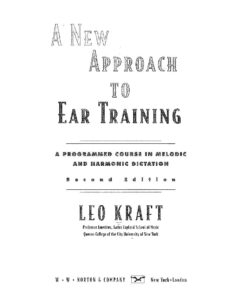 |
|
| A New Approach To Piano Technique (By Ruth A. Dickerson) (1962) |
 |
A new approach to piano technique |
| A Night In Tunisia – Dizzy Gillespie.mscz | ||
| A Pedal Method For The Piano (By Albert F Venino) (1893) |
 |
|
| A Popular Account Of Ancient Musical Instruments And Their Development by William Lynd (Book 1897) |
 |
|
| A Rockin’ Christmas Piano Vocal Guitar |
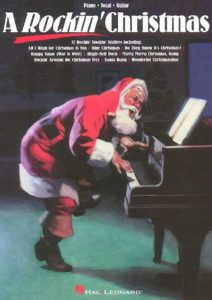 |
A Rockin’ Christmas Piano Vocal Guitar Contents — Rockin Christmas |
| A Single Man – George’s Waltz (Shigeru Umebayashi) | ||
| A Single Man – Stillness of the Mind (Abel Korzeniowski) | ||
| A Smooth Jazz Christmas – Mellow Seasonal Favorites for Piano arr. Roger House |
 |
A Smooth Jazz Christmas – Mellow Seasonal Favorites for Piano arr. Roger House |
| A Song For You – Leon Russell Ray Charles (Musescore File).mscz | ||
| A Star Is Born – Always Remember Us This Way Lady Gaga |
 |
|
| A Star Is Born – Shallow Lady Lady Gaga |
 |
|
| A Tale Of Two Sisters Ost – Epilogue Piano Solo |
 |
|
| A Thousand Years – Twilight OST (Christina Perri) | ||
| A Time For Love – Johnny Mandel |
 |
|
| A Time For Us – Guitar TABlature |
 |
|
| A Time For Us (Love Theme from Romeo and Juliet) Nino Rota |
 |
|
| A Time For Us (Romeo and Juliet OST) Nino Rota | ||
| A Touch Of Jazz 14 well-known hymns, gospel songs and contemporary praise songs by Wolaver Bill |
 |
A Touch Of Jazz 14 well-known hymns, gospel songs and contemporary praise songs by Wolaver Bill |
| A Tribute To Ella Fitzgerald Piano Vocal Guitar |
 |
A tribute to ELLA FITZGERALD |
| A Walk To Remember – Only Hope | ||
| A whiter shade of pale – Procul Harum | A whiter shade of pale – Procul Harum | |
| AaRON U-turn Lili Piano |
 |
|
| Ab Ovo – Joep Beving (Musescore File).mscz | ||
| Abba – Abba Gold – Greatest Hits |
 |
ABBA Gold Geatest Hits booksong sheet music |
| Abba – Chiquitita | ||
| Abba – Dancing Queen | ||
| Abba – Fernando | ||
| Abba – I Have A Dream | ||
| Abba – Like An Angel Passing Through My Room | ||
| Abba – Mamma Mia | ||
| Abba – Slipping Through My Fingers | ||
| Abba – Thank You For The Music | Abba-Thank-You-For-The-Music 1st page | |
| ABBA – Thank You For The Music (Piano Vocal Guitar) | ABBA – Thank You For The Music (Piano Vocal Guitar) | |
| ABBA – Thank You For the Music (Piano vocal Guitar) (Musescore File).mscz | ||
| Abba – Thank You For The Music Piano & vocal | Abba – Thank You For The Music-abba-satb | |
| Abba – The Winner Takes It All | ||
| ABBA Dancing Queen Easy Piano Solo |
 |
|
| ABBA Fernando (Piano Solo arr.) |
 |
|
| ABBA Fernando (Piano Solo arr.).mscz | ||
| ABBA Greatest Hits |
 |
ABBA GREATEST HITS SHEET MUSIC BOOK |
| ABBA I Have A Dream |
 |
|
| Abba The Very Best Vol 1 Easy Piano Hans Gunter Heumann Pop Classics For Piano |
 |
Abba The Very Best Vol 1 Easy Piano |
| Abba The Very Best Vol 2 Easy Piano Hans Gunter Heumann Pop Classics For Piano |
 |
Abba The Very Best Vol 2 Easy Piano |
| Abbey Lincoln Songbook |
 |
Abbey Lincoln Songbook |
| Abbey Lincoln Songbook Piano Vocal Guitar Chords |
 |
Abbey Lincoln Songbook Piano Vocal Guitar Chords |
| Abdullah Ibrahim – The Piano World Of |
 |
Abdullah Ibrahim, The Piano World Of |
| Abdullah Ibrahim The African Piano Of Abdullah Ibrahim Vol 1 |
 |
Abdullah Ibrahim The African Piano Of Abdullah Ibrahim Vol 1 |
| Abdullah Ibrahim The Wedding (piano solo transcription sheet music, partition) |
 |
|
| Abel Korzeniowski – Death Is My Heir (from Romeo and Juliet) |
 |
|
| ABRSM Jazz Piano Pieces Grade 1 to 5 |
 |
ABRSM Jazz Piano Pieces Grade 1 to 5 ABRSM Jazz Piano Pieces Grade 5ABRSM Jazz Piano Pieces Grade 5 |
| ABRSM Piano Exam Pieces Grade 1 (2016) |
 |
ABRSM Piano Exam Pieces Grade 1 (2016) |
| ABRSM Piano Scales, Arpeggios Grade 8 |
 |
|
| ABRSM Piano Scales, Arpeggios and broken chords Grade 1 |
 |
|
| ABRSM Piano Scales, Arpeggios and broken chords Grade 4 |
 |
ABRSM Piano Scales, Arpeggios and broken chords Grade 4 |
| ABRSM Piano Scales, Grade 2 A Guide for Students and Teachers | ABRSM Piano Scales, Grade 2 A Guide for Students and Teachers | |
| ABRSM – Time pieces for guitar vol. 1 |
 |
|
| ABRSM – Time pieces for guitar vol. 2 |
 |
|
| ABRSM 2017 18 Piano Exam Pieces Grade 1 |
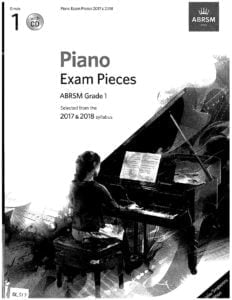 |
ABRSM 2017 18 Piano Exam Pieces Grade 1 |
| ABRSM 2017 18 Piano Exam Pieces Grade 2 |
 |
ABRSM 2017 18 Piano Exam Pieces Grade 2 |
| ABRSM 2017 18 Piano Exam Pieces Grade 3 |
 |
|
| ABRSM 2017 18 Piano Exam Pieces Grade 4 |
 |
|
| ABRSM 2017 18 Piano Exam Pieces Grade 5 |
 |
|
| ABRSM 2017 18 Piano Exam Pieces Grade 6 |
 |
|
| ABRSM 2017 18 Piano Exam Pieces Grade 7 |
 |
|
| ABRSM 2017 18 Piano Exam Pieces Grade 8 |
 |
|
| ABRSM 2021-2022 Piano Exam Pieces Grade 1 |
 |
|
| ABRSM 2021-2022 Piano Exam Pieces Grade 2 |
 |
|
| ABRSM 2021-2022 Piano Exam Pieces Grade 3 |
 |
|
| ABRSM 2021-2022 Piano Exam Pieces Grade 5 |
 |
|
| ABRSM 2021-2022 Piano Exam Pieces Grade 6 |
 |
|
| ABRSM 2021-2022 Piano Exam Pieces Grade 8 |
 |
|
| ABRSM 2021-2022 Piano Exam Pieces Initial Grade |
 |
ABRSM 2021-2022 Piano Exam Pieces Initial Grade |
| ABRSM Aural Training In Practice Book 1 Grades 1 to 3 |
 |
|
| ABRSM Aural Training In Practice Book 2 Grades 4 and 5 |
 |
|
| ABRSM Discovering Music Theory (Complete) Grades 1 to 5 Workbook by Simon Rushby (2020 Exams) |
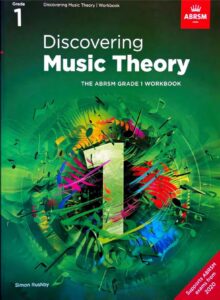 |
ABRSM Discovering Music Theory (Complete) Grades 1 to 5 Workbook by Simon Rushby (2020 Exams) contents |
| ABRSM Erster Verlust Grade 4 ABRSM Piano Exam Pieces 2021 & 2022 |
 |
|
| ABRSM Etude In A Minor – Dmitry Kabalevsky ABRSM Grade 4 Piano Exam Pieces 2021 & 2022 |
 |
|
| ABRSM Grade 2 – Inter-City Stomp byChristopher Norton From Microjazz Collection (Sheet Music) |
 |
|
| ABRSM Initial Grade Piano Exam Pieces 2023 2024 |
 |
|
| ABRSM Minuet and Trio D 41 No 21 – Franz Schubert ABRSM Grade 4 Piano Exam Pieces 2021 & 2022 |
 |
|
| ABRSM More Music Theory Sample Papers Grade 5 For New Format |
 |
|
| ABRSM Music Theory In Practice, Grade 1 (Eric Taylor) |
 |
|
| ABRSM Music Theory In Practice, Grade 2 (Eric Taylor) |
 |
|
| ABRSM Music Theory Past Papers Grade 1 2004 |
 |
|
| ABRSM Music Theory Past Papers Grade 4 2016 |
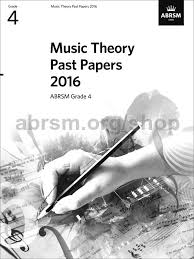 |
|
| ABRSM Music Theory Past Papers Grade 5 2012 |
 |
|
| ABRSM Music Theory Past Papers Grade 6 2013 |
 |
|
| ABRSM Nikki Iles Danny Boy ABRSM Piano Exam Grade 8 2023 Jazz Piano arr. inspired by Bill Evans |
 |
|
| ABRSM Nikki Iles Friends Book 1 Intermediate Jazz Pieces For Piano |
 |
ABRSM Nikki Iles Friends Book 1 Intermediate Jazz Pieces For Piano |
| ABRSM Nikki Iles Friends Book 2 Intermediate To Advanced Jazz Pieces For Piano |
 |
ABRSM Nikki Iles Friends Book 2 Intermediate To Advanced Jazz Pieces For Piano |
| ABRSM Nikki Iles The Elephant Parade ABRSM piano Exam |
 |
|
| ABRSM Piano 2025-2026 Grade 8 C3 A Nightingale Sang in Berkeley Square by Sherwin – Maschwitz |
 |
|
| ABRSM Piano Exam 2007-2008 Grade 3 |
 |
|
| ABRSM Piano Exam 2015-16 Grade 3 |
 |
ABRSM Piano Exam 2015-16 Grade 3 |
